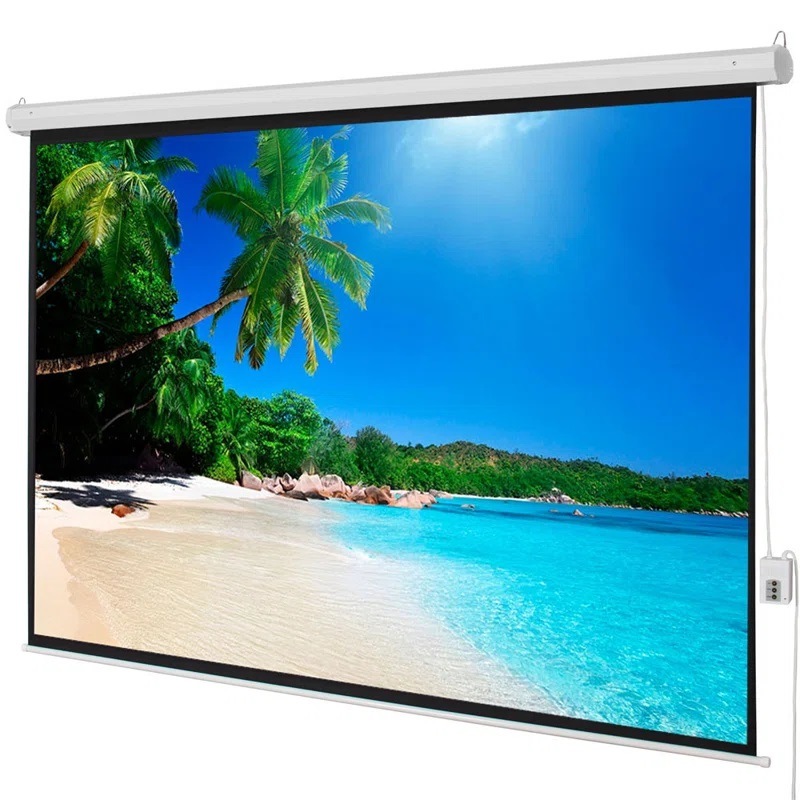Tubular Motorized Projection Screen
A tubular motorized projector screen is a specific type of motorized screen that uses a tubular motor to operate the up and down movement of the screen. Here's a breakdown:

A tubular motorized projector screen is a specific type of motorized screen that uses a tubular motor to operate the up and down movement of the screen. Here's a breakdown:
Tubular Motor:
Good Size for 16:9 Aspect Ratio:
For a 16:9 aspect ratio (common for widescreen content), a good size screen depends on your viewing distance and space limitations. Here's a general guideline:
Benefits of Tubular Motorized Screens:
Screen Fabric for Tubular Motorized Screens:
Several screen fabric options are available for tubular motorized screens, each with its advantages:
Choosing the right screen fabric depends on your specific needs and viewing environment. Consider factors like lighting conditions, desired viewing angles, and whether you have rear projection speakers.